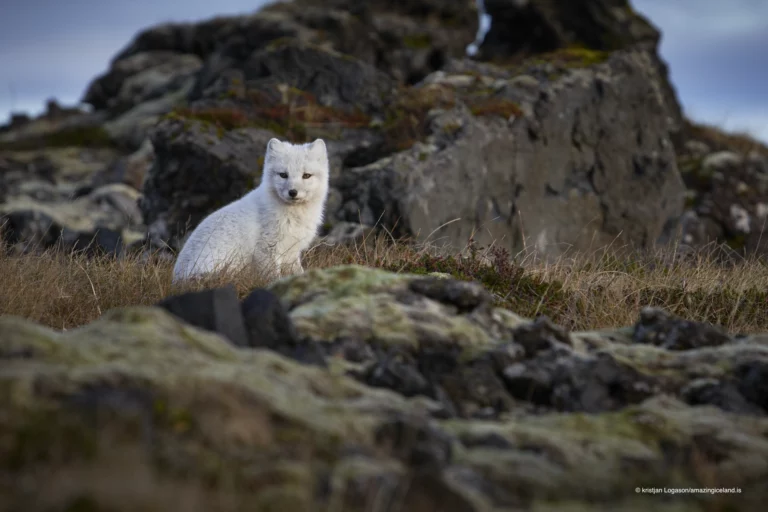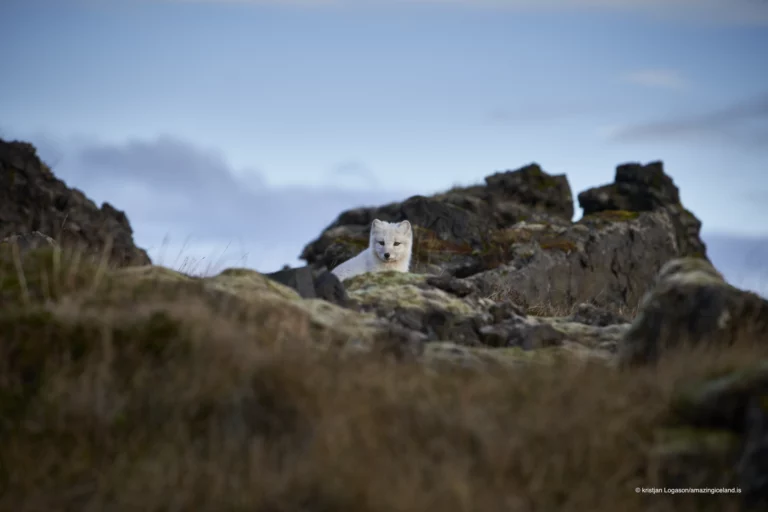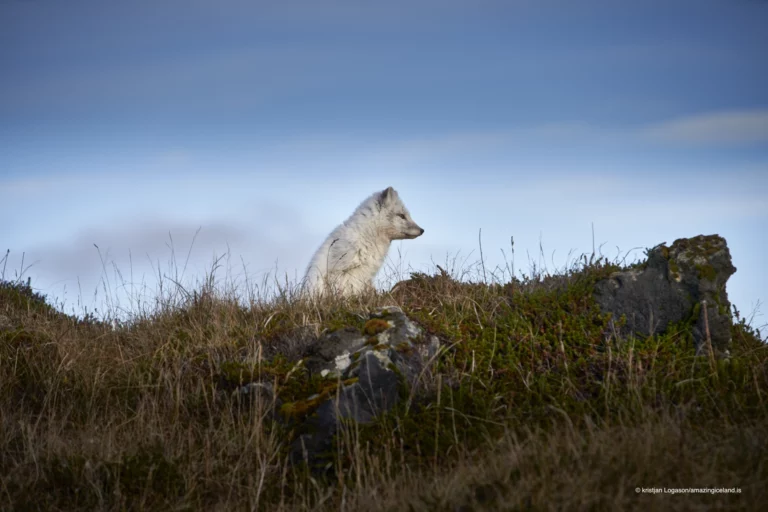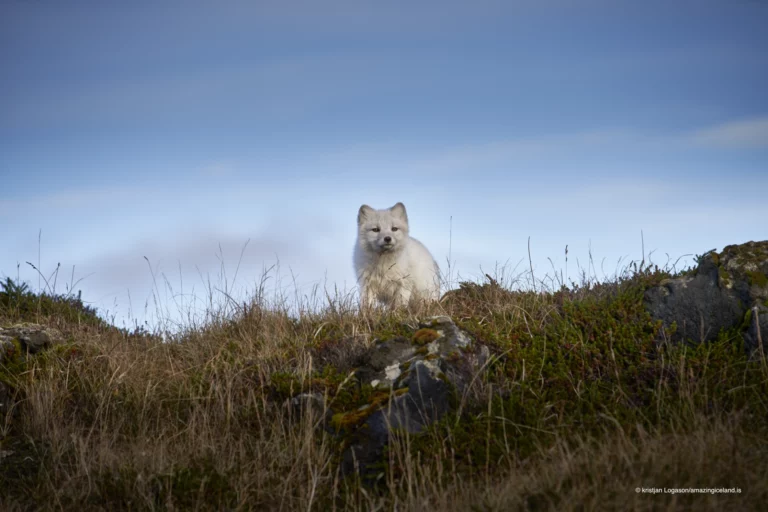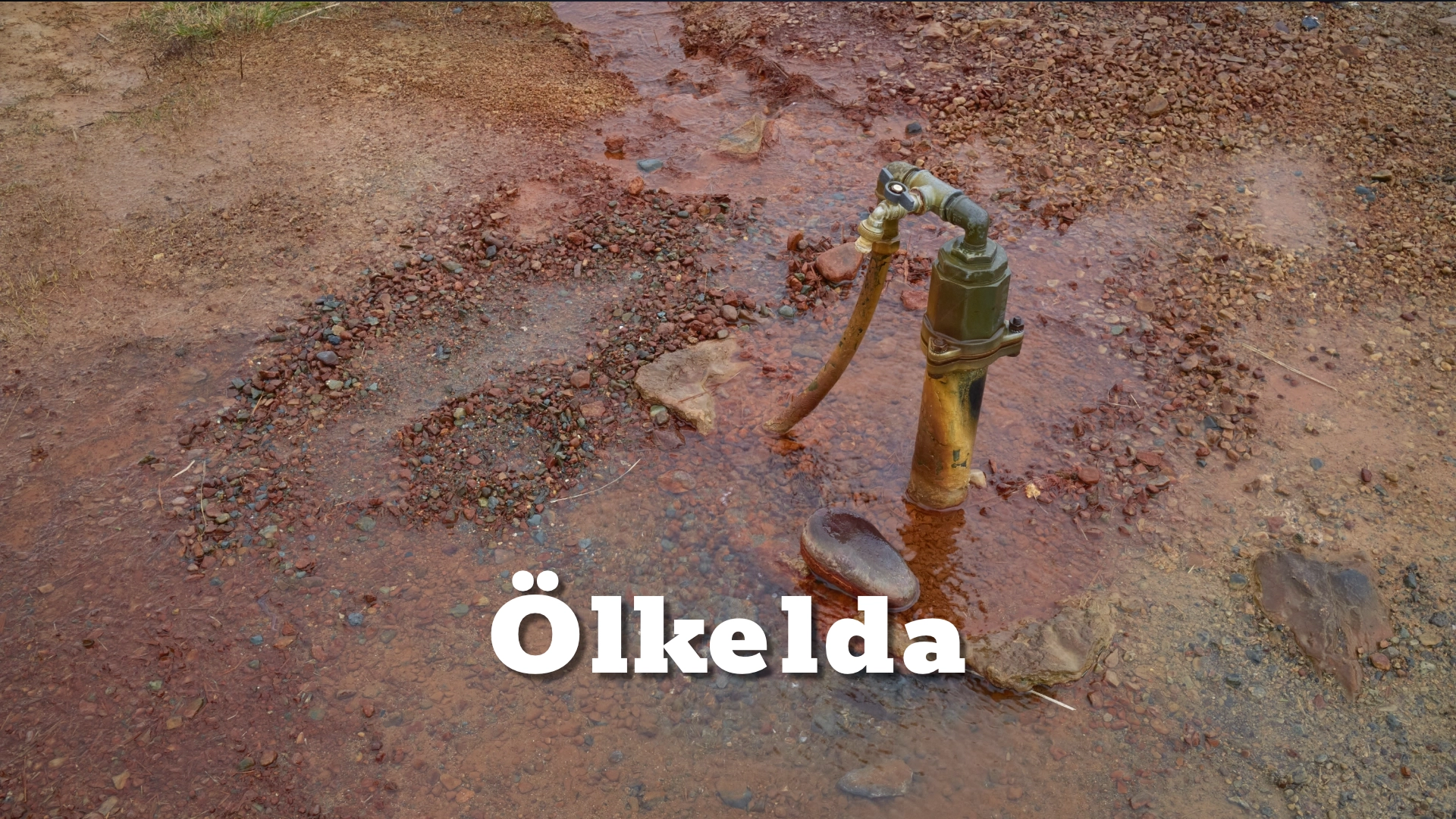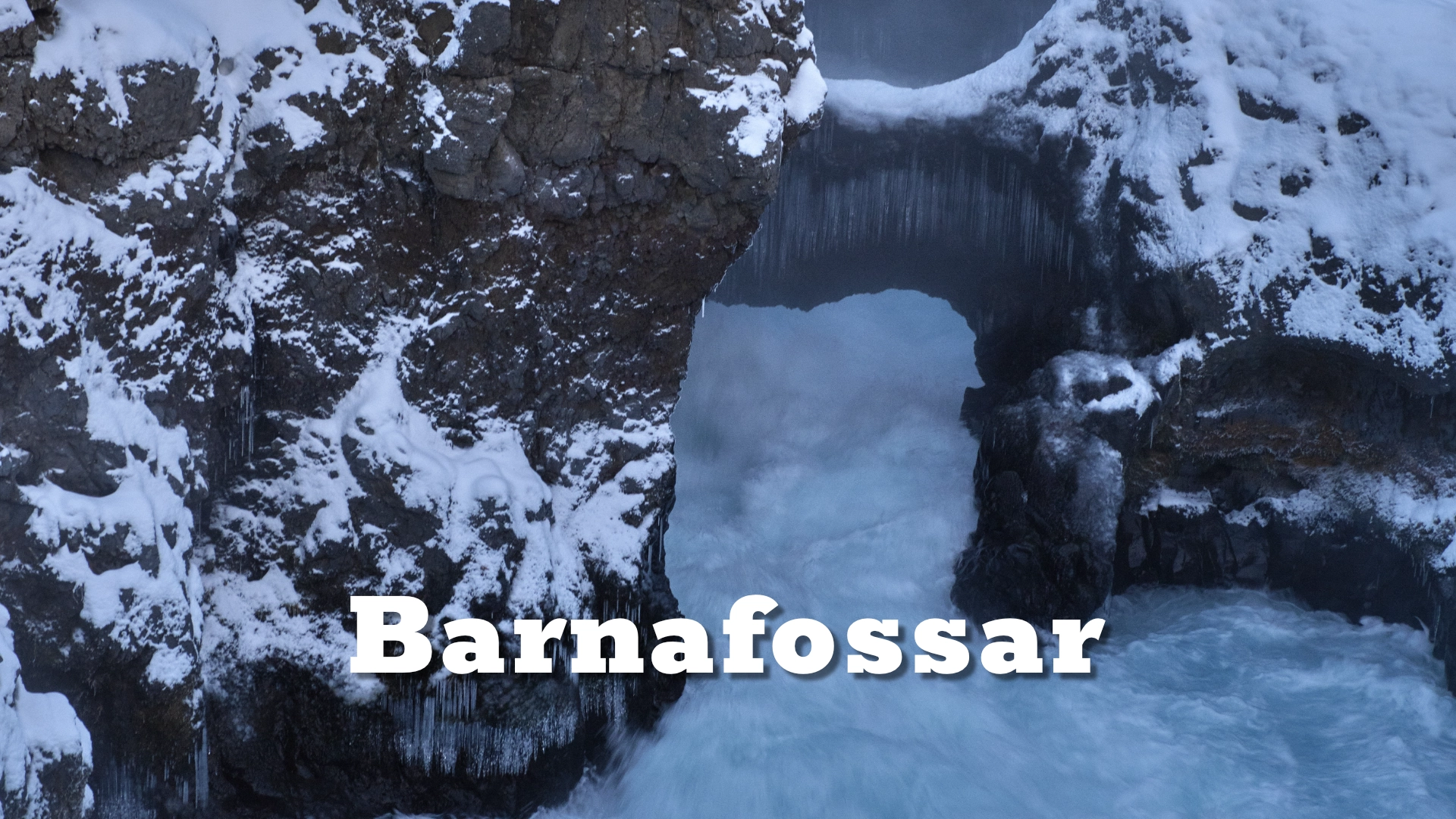
The Snæfellsnes Peninsula in Iceland is home to a variety of wildlife, including the Arctic fox.
The location of Gestur the Arctic Fox in Snæfellsnes
Latitude
Longitude
Gestur the Arctic Fox in Snæfellsnes
The Arctic fox (Vulpes lagopus) is an incredible creature that has managed to survive in Iceland’s harsh environment for over 10,000 years. It is believed that they migrated to the country at the end of the last Ice Age, traversing the frozen sea from Alaska through Greenland, using the ice-covered surface to make their way to their new home. Today, there are approximately 8,000 Arctic foxes in Iceland, primarily located in remote and uninhabited areas such as the highlands and coastal regions.
One of the reasons why the Arctic fox has been able to thrive in such harsh conditions is due to its unique physical attributes. This small to medium-sized carnivorous mammal weighs between 3 and 5 kilograms and has a distinctive thick double-layered coat that provides excellent insulation. The long guard hairs that make up the outer layer protect the fox from the elements, while the dense underfur traps air to keep them warm. Interestingly, the fox’s coat color changes according to the seasons, with a white or light gray coat in winter for effective camouflage in snowy landscapes, and a brown or grayish-brown summer coat to blend in with the tundra.
If you’re hoping to catch a glimpse of an Arctic fox in the wild, your best bet would be to visit the Snæfellsnes Peninsula in Iceland. However, be prepared to exercise patience and consideration for this shy and nimble creature, as it can vanish in the blink of an eye. Nevertheless, witnessing an Arctic fox in its natural habitat is an unforgettable and awe-inspiring experience you’ll cherish for a lifetime.
Interesting facts:
The Locomotive Elite
What do Donald Trump and Iceland’s Locomotive Elite have in common?
Far more than you think.
In The Locomotive Elite, you’ll uncover how a tiny clique in Iceland captured extensive control—of banks, courts, media, and even the central bank.
For decades they ruled, first democratically, then through corruption and in the end through crime, enriching themselves and their cronies while dismantling oversight.
The result?
One of the most spectacular financial collapses in modern history.
